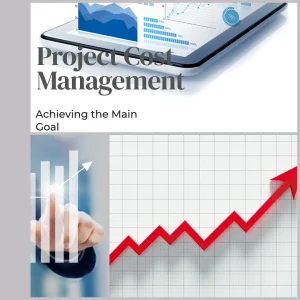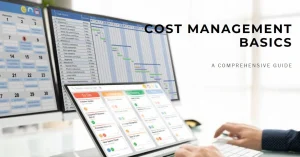Introduction to Stakeholder Engagement
Stakeholder engagement is a critical component of project management that involves actively involving all parties who have an interest in the project. This includes anyone who can affect or be affected by the project, such as clients, team members, suppliers, and even the community. Effective stakeholder engagement is essential for ensuring that the project meets its objectives and delivers value to all involved.
Definition and Significance of Stakeholder Engagement
Stakeholder engagement refers to the process of communicating and collaborating with stakeholders throughout the project lifecycle. It is significant for several reasons:
- Alignment of Interests: Engaging stakeholders helps to align their interests with the project goals, ensuring that everyone is on the same page and working towards a common objective. This alignment can prevent misunderstandings and conflicts that may arise during the project [1].
- Informed Decision-Making: By involving stakeholders in discussions and decision-making processes, project managers can gather valuable insights and feedback that can enhance project outcomes. This collaborative approach leads to more informed decisions that consider diverse perspectives [2].
- Building Trust and Relationships: Effective engagement fosters strong relationships and trust between project teams and stakeholders. This trust is crucial for facilitating open communication and collaboration, which can significantly impact project success [5].
The Role of a Contract Project Manager in Stakeholder Engagement
A contract project manager plays a pivotal role in stakeholder engagement by acting as a bridge between the project team and stakeholders. Their responsibilities include:
- Identifying Stakeholders: The first step in stakeholder engagement is identifying all relevant stakeholders. A contract project manager must ensure that all parties are recognized and their interests are understood [1].
- Developing Engagement Strategies: The contract project manager is responsible for creating a stakeholder management strategy that outlines how to engage with different stakeholders effectively. This includes determining the frequency and methods of communication tailored to each stakeholder group [7].
- Managing Expectations: One of the key tasks is to manage stakeholders’ expectations by providing clear and timely information about project progress, challenges, and changes. This proactive communication helps to mitigate potential conflicts and fosters a collaborative environment [12].
Impact of Effective Engagement on Project Success
The impact of effective stakeholder engagement on project success cannot be overstated. When stakeholders are engaged properly, the project is more likely to achieve its objectives due to:
- Increased Support: Engaged stakeholders are more likely to support the project, providing resources, feedback, and advocacy that can help overcome obstacles [2].
- Risk Mitigation: By understanding stakeholder concerns and expectations, project managers can identify potential risks early and develop strategies to address them, leading to smoother project execution [13].
- Enhanced Project Outcomes: Ultimately, effective stakeholder engagement contributes to higher satisfaction levels among stakeholders, which can lead to better project outcomes and long-term relationships that benefit future projects [5][10].
Identifying Stakeholders
For contract project managers, effectively identifying and categorizing stakeholders is crucial for successful project execution. Stakeholders can significantly influence project outcomes, and understanding their needs and expectations is essential for fostering collaboration and achieving project goals. Here are some key points to consider when identifying stakeholders:
Types of Stakeholders
- Primary Stakeholders: These are individuals or groups directly affected by the project outcomes. They typically include clients, team members, and end-users. Their interests and satisfaction are paramount, as they are the ones who will experience the project’s results firsthand.
- Secondary Stakeholders: This group includes those who may not be directly impacted by the project but still have an interest in its success. Examples include suppliers, regulatory bodies, and community members. While their influence may be less direct, their support can be vital for project acceptance and sustainability.
- Key Stakeholders: These stakeholders hold significant power or influence over the project. They can include senior management, investors, or influential community leaders. Engaging with key stakeholders is critical, as their support can facilitate resources, approvals, and overall project success.
Methods for Stakeholder Identification
- Brainstorming: This collaborative technique involves gathering project team members to generate a comprehensive list of potential stakeholders. By encouraging open discussion, project managers can uncover various perspectives and identify stakeholders who may not be immediately obvious.
- Stakeholder Analysis Matrix: This tool helps categorize stakeholders based on their level of influence and interest in the project. By plotting stakeholders on a power/interest grid, project managers can prioritize engagement efforts, ensuring that those with the most significant impact receive appropriate attention and communication [6][10].
Understanding Stakeholder Interests, Influence, and Impact
Recognizing the interests, influence, and potential impact of stakeholders is vital for effective engagement. Project managers should:
- Analyze Interests: Understanding what stakeholders care about allows project managers to tailor communication and engagement strategies. This analysis helps in addressing concerns and aligning project objectives with stakeholder expectations [15].
- Assess Influence: Identifying the level of influence each stakeholder has on the project helps prioritize engagement efforts. High-influence stakeholders may require more frequent updates and involvement in decision-making processes to ensure their support [6][11].
- Evaluate Impact: Understanding how stakeholders are affected by the project outcomes can guide project managers in developing strategies that mitigate risks and enhance stakeholder satisfaction. Engaging stakeholders early in the process fosters transparency and trust, creating a collaborative atmosphere that benefits the project as a whole [14][15].
By effectively identifying and categorizing stakeholders, contract project managers can enhance their engagement strategies, leading to improved project outcomes and stakeholder satisfaction.
Developing an Engagement Strategy
Particularly for contract project managers, the development of a robust stakeholder engagement strategy is crucial for ensuring project success. A stakeholder engagement plan serves as a roadmap for how project managers will interact with stakeholders throughout the project lifecycle. This plan not only identifies who the stakeholders are but also outlines their interests, influence, and the best methods for communication and involvement.
Key Elements of a Successful Engagement Strategy
- Communication Plan: A well-defined communication plan is essential for effective stakeholder engagement. This plan should specify how and when information will be shared with stakeholders, ensuring that everyone is kept informed and aligned with project developments. It is important to tailor communication methods to the preferences of different stakeholder groups, whether through emails, meetings, or reports [4][11].
- Meeting Schedules: Regularly scheduled meetings are vital for maintaining engagement and fostering collaboration. These meetings can serve as platforms for discussing project updates, addressing concerns, and gathering input from stakeholders. By involving stakeholders in key strategy sessions and informal discussions, project managers can build stronger relationships and enhance stakeholder commitment to the project [14][15].
- Feedback Loops: Establishing feedback mechanisms allows stakeholders to voice their opinions and concerns, which can be invaluable for project adjustments. This two-way communication not only helps in identifying potential challenges early on but also reinforces stakeholder investment in the project. Continuous monitoring and assessment of stakeholder feedback can guide necessary modifications to the engagement strategy, ensuring its relevance throughout the project [11][12].
Aligning Stakeholder Expectations with Project Goals
One of the most critical aspects of stakeholder engagement is aligning their expectations with the overall project goals. This alignment helps to mitigate misunderstandings and conflicts that may arise during the project. By conducting thorough stakeholder analysis, project managers can gain insights into the interests, needs, and expectations of each stakeholder group. This understanding enables project managers to tailor their engagement strategies effectively, ensuring that stakeholders feel valued and heard [9][13].
Effective Communication Techniques
Particularly for contract project managers, effective communication is paramount for fostering positive relationships with stakeholders. Clear and consistent communication not only keeps stakeholders informed but also builds trust and alignment throughout the project lifecycle. Here are some strategies to enhance stakeholder engagement through effective communication techniques.
Importance of Clear and Consistent Communication
Clear communication serves as the foundation for successful stakeholder engagement. It ensures that all parties involved are on the same page regarding project goals, progress, and challenges. According to the Project Management Institute, project managers often spend a significant amount of time communicating with stakeholders, which underscores the necessity of effective communication practices [1]. Consistency in messaging helps to avoid misunderstandings and misalignments, which can lead to conflicts and project delays [10].
Choosing the Right Communication Channels
Selecting appropriate communication channels is crucial for effective stakeholder engagement. Different stakeholders may have varying preferences and needs, so employing a mix of communication methods can enhance engagement. Here are some tips for choosing the right channels:
- Email and Newsletters: These are effective for disseminating information quickly and keeping stakeholders updated on project developments. Regular newsletters can summarize key milestones and upcoming tasks [5].
- Meetings: Face-to-face or virtual meetings provide opportunities for real-time discussions, allowing for immediate feedback and clarification of any issues. They are particularly useful for complex topics that require in-depth conversation [9].
- Reports: Detailed project reports can serve as a formal means of communication, providing stakeholders with comprehensive insights into project status, risks, and performance metrics [6].
By tailoring the communication method to the audience, project managers can ensure that stakeholders receive information in a manner that is accessible and engaging.
The Role of Active Listening and Empathy
Active listening and empathy are essential components of effective stakeholder communication. Engaging stakeholders is not just about conveying information; it also involves understanding their perspectives and concerns. Active listening entails fully concentrating on what stakeholders are saying, which fosters a sense of respect and value [12].
Empathy allows project managers to connect with stakeholders on a personal level, acknowledging their feelings and viewpoints. This connection can lead to more productive discussions and a collaborative atmosphere, ultimately enhancing stakeholder satisfaction and commitment to the project [3].
Building Trust and Credibility
For contract project managers, establishing trust and credibility with stakeholders is paramount. Effective stakeholder engagement hinges on the ability to foster strong relationships, which can significantly influence project success. Here are key strategies to build and maintain trust with stakeholders throughout the project lifecycle.
Importance of Transparency and Honesty
Transparency and honesty are foundational elements in stakeholder communications. When stakeholders are kept informed about project developments, challenges, and changes, it cultivates an environment of trust. Being open about potential risks and uncertainties not only demonstrates integrity but also allows stakeholders to feel valued and involved in the decision-making process. This approach encourages a collaborative atmosphere where stakeholders are more likely to support project initiatives and contribute positively.
- Open Communication: Regularly share information regarding project status, challenges, and any changes that may affect stakeholders. This transparency helps in managing expectations and reduces the likelihood of misunderstandings [10][11].
Strategies for Demonstrating Reliability and Accountability
Reliability and accountability are critical in establishing credibility with stakeholders. Project managers can adopt several strategies to showcase their commitment to stakeholder interests:
- Consistent Follow-Through: Ensure that commitments made to stakeholders are honored. If changes occur, communicate them promptly and explain the reasons behind them. This reliability reinforces stakeholders’ confidence in the project manager’s capabilities [6][15].
- Empathy and Understanding: Actively listen to stakeholder concerns and demonstrate empathy. By understanding their perspectives and needs, project managers can tailor their approaches to better align with stakeholder expectations, fostering a sense of partnership [4][8].
Role of Regular Updates and Progress Reports
Regular updates and progress reports are essential tools for building credibility with stakeholders. These communications serve multiple purposes:
- Keeping Stakeholders Informed: Regularly scheduled updates help stakeholders stay informed about project milestones, timelines, and any issues that may arise. This proactive communication strategy not only keeps stakeholders engaged but also reassures them that the project is on track [12][13].
- Encouraging Feedback: Progress reports should invite feedback from stakeholders, creating a two-way communication channel. This engagement not only enhances trust but also allows project managers to address concerns before they escalate into larger issues [5][10].
- Highlighting Achievements: Use updates to celebrate project milestones and achievements. Acknowledging progress reinforces stakeholders’ confidence in the project team and demonstrates accountability for the project’s success [11][14].
Managing Conflicts and Challenges
Engaging stakeholders effectively is crucial for the success of any project. However, conflicts and challenges often arise during stakeholder engagement, which can hinder progress and create tension. Here are some key points to consider when managing these conflicts and challenges:
Common Challenges in Stakeholder Engagement
- Miscommunication: One of the most prevalent issues in stakeholder engagement is miscommunication. This can occur due to unclear messaging, assumptions about stakeholder knowledge, or differences in communication styles. Regular updates and clear communication channels can help mitigate this risk [5][15].
- Differing Priorities: Stakeholders often have varying interests and priorities, which can lead to conflicts. For instance, while some stakeholders may prioritize cost savings, others may focus on quality or timelines. Understanding these differing priorities is essential for effective engagement [3][12].
Conflict Resolution Techniques
- Negotiation: This technique involves discussing the conflicting interests of stakeholders to reach a mutually acceptable solution. Project managers should facilitate open discussions where all parties can express their concerns and preferences, aiming for a win-win outcome [10][14].
- Mediation: In cases where direct negotiation fails, mediation can be a valuable tool. A neutral third party can help facilitate discussions and guide stakeholders toward a resolution. This approach can be particularly effective in complex projects with multiple stakeholders [9][12].
- Compromise: Sometimes, finding a middle ground is necessary. Compromise involves each party making concessions to reach an agreement. While this may not satisfy everyone completely, it can help maintain relationships and keep the project moving forward [8][14].
Importance of Adaptability
Adaptability is a critical skill for project managers when managing stakeholder relationships. The ability to adjust strategies and approaches based on the evolving dynamics of stakeholder engagement can significantly enhance project outcomes. Here are some ways to foster adaptability:
- Regular Feedback: Actively soliciting feedback from stakeholders can provide insights into their changing needs and expectations. This allows project managers to adjust their engagement strategies accordingly [13][15].
- Proactive Communication: Keeping stakeholders informed about project developments and potential challenges can help build trust and reduce the likelihood of conflicts. A proactive approach to communication ensures that stakeholders feel valued and involved in the process [6][11].
- Flexibility in Approach: Being open to changing plans or strategies based on stakeholder input can lead to more effective engagement. This flexibility demonstrates a commitment to collaboration and can help resolve conflicts before they escalate [4][12].
By identifying common challenges, employing effective conflict resolution techniques, and embracing adaptability, project managers can enhance their stakeholder engagement efforts. This not only fosters a collaborative environment but also drives project success.
Measuring Engagement Success
Particularly for contract project managers, measuring stakeholder engagement success is crucial for ensuring that projects meet their objectives and satisfy all parties involved. Here are some key points to consider when evaluating the effectiveness of your stakeholder engagement efforts:
Metrics and KPIs for Measuring Stakeholder Engagement Success
To effectively measure stakeholder engagement, it is essential to define clear metrics and Key Performance Indicators (KPIs). These can include:
- Number of Stakeholder Meetings: Tracking the frequency of meetings or consultations with stakeholders can provide a quantitative measure of engagement. A higher number of interactions often correlates with increased stakeholder involvement and satisfaction [12].
- Stakeholder Satisfaction Scores: Conducting surveys or polls to gauge stakeholder perceptions and satisfaction can yield valuable qualitative data. This feedback can help identify areas for improvement and reinforce successful strategies [8][10].
- Active Participation Rates: Measuring the level of stakeholder participation in decision-making processes can indicate how engaged they feel. This can be assessed through attendance records, contributions during meetings, and feedback on project milestones [10].
- Engagement Action Plans: Regularly reviewing action plans for stakeholder engagement can help ensure that goals are being met and strategies are effective. This ongoing assessment allows for adjustments based on stakeholder feedback and changing project dynamics [11].
Importance of Feedback from Stakeholders
Feedback from stakeholders is not just a formality; it is a vital component of successful engagement. Actively seeking and incorporating stakeholder input can lead to:
- Improved Engagement Strategies: Understanding stakeholder needs and expectations allows project managers to tailor their engagement approaches, fostering a more collaborative environment [4][5].
- Enhanced Project Outcomes: When stakeholders feel heard and valued, they are more likely to support the project, leading to better outcomes and increased project success rates [3][15].
- Long-term Relationships: Continuous feedback helps build trust and rapport with stakeholders, which is essential for future projects. Engaged stakeholders are more likely to become advocates for the project and contribute positively to its success [2][3].
Examples of Successful Stakeholder Engagement
Successful stakeholder engagement can be illustrated through various case studies and examples:
- Borealis’ Approach: Borealis has implemented a comprehensive stakeholder engagement strategy that emphasizes data management and effective communication. Their proactive approach has led to high levels of stakeholder satisfaction and project alignment with community needs [3].
- Project Milestone Awareness: A project that regularly updates stakeholders on milestones and progress tends to see higher engagement levels. For instance, a construction project that held monthly briefings and provided transparent updates received positive feedback and active participation from local stakeholders, which contributed to smoother project execution [10].
- Tailored Engagement Activities: Projects that customize their engagement activities based on stakeholder interests and influence have reported greater success. For example, a technology implementation project that organized targeted workshops for different stakeholder groups was able to address specific concerns and foster a sense of ownership among participants [4][5].
Conclusion
The role of a Contract Project Manager is pivotal, particularly when it comes to engaging stakeholders effectively. Stakeholder engagement is not merely a procedural task; it is a fundamental component that can significantly influence the success of a project. Here are the key takeaways to consider:
- Importance of Stakeholder Engagement: Engaging stakeholders early and consistently throughout the project lifecycle is crucial. It fosters collaboration, aligns interests, and enhances project outcomes. By understanding stakeholders’ needs and interests, project managers can tailor their strategies to ensure that all parties feel valued and involved, ultimately leading to stronger buy-in and support for the project [8][9].
- Implementing Effective Strategies: The strategies discussed, such as identifying and prioritizing stakeholders, maintaining regular communication, and adapting engagement techniques based on stakeholder feedback, are essential for successful project management. By actively applying these strategies, project managers can create a more inclusive and cooperative working environment, which is vital for navigating the complexities of any project [4][5][10].
By prioritizing stakeholder engagement and implementing these strategies, Contract Project Managers can not only drive project success but also build lasting relationships that extend beyond individual projects.
Find out more about Shaun Stoltz https://www.shaunstoltz.com/about/.
This post was written by an AI and reviewed/edited by a human.



